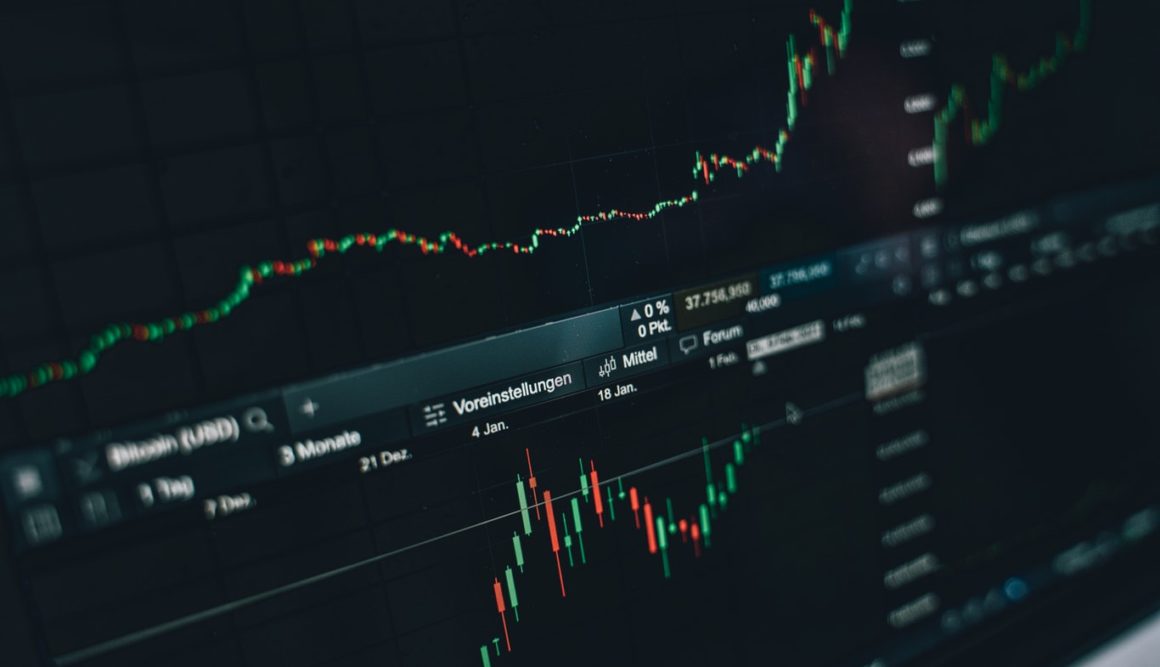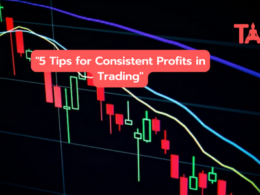Here are the 40 Stock Market Terms That You Must Know.
- Here are the 40 Stock Market Terms That You Must Know.
- Bull:
- Bear:
- Fundamental Analysis:
- Technical Analysis:
- Breakout:
- Distribution:
- Double Top:
- Double Bottom:
- Downtrend:
- Exhaustion:
- Long:
- Overbought:
- Oversold:
- Peak:
- Recession:
- Resistance:
- Support:
- Breakdown:
- Consolidation:
- Correction:
- Divergence:
- Momentum:
- Moving Average:
- Open Interest:
- Simple Moving Average:
- Exponential Moving Average
- Swing Trading:
- Uptrend:
- Volume:
- Indicators:
- Day Trader:
- Position:
- Short:
- Volatility:
- Drawdown:
- Test:
- Trend:
- The Holy Grail:
- Over To You
Bull:
An investor who thinks the market, specific security, or an industry will rise.
Bear:
An investor who believes that a particular security or market is headed downward is indicative of a bearish trend—Bears attempt to profit from a decline in prices. Bears are generally pessimistic about the state of a given market.
Fundamental Analysis:
A method of evaluating securities by analyzing statistics generated by market activity such as past prices and volume is defined as ‘Fundamental Analysis.’ Technical analysts do not attempt to measure a security’s intrinsic value but instead use charts and other tools to identify patterns that suggest future activity.
Technical Analysis:
This is a method of evaluating securities by analyzing statistics generated by market activity, such as past prices and volume. Technical analysts do not attempt to measure a security’s intrinsic value but instead use charts and other tools to identify patterns that suggest future activity.
Breakout:
A price movement through an identified level of support or resistance, usually followed by heavy volume and increased volatility, is a ‘breakout.’ Traders will buy the underlying asset when the price breaks above a resistance level sell when it breaks below support. A breakout is a bullish counterpart to a breakdown.
Distribution:
Distribution is when trading volume is higher than the previous day without any price appreciation.
Double Top:
A term used in technical analysis to describe the rise of a stock, a drop, another rise to the same level as the original rise, and finally another drop.
Double Bottom:
A charting pattern is used in technical analysis. It describes the drop of a stock (or index), a rebound, another drop to the same (or similar) level as the initial drop, and finally another rebound.
Downtrend:
A Downtrend describes the price movement of a financial asset when the overall direction is downward. A formal downtrend occurs when each successive peak and trough is lower than those found earlier in the trend.
Exhaustion:
A situation in which most participants trading in the same asset are either long or short, leaving few investors to take the other side of the transaction when they wish to close their positions. Exhaustion signals the reversal of the current trend because it illustrates excess levels of supply or demand.
Long:
The buying of a security such as a stock, commodity, or currency, with the expectation that the asset will rise in value, is called ‘Long.’
Overbought:
An asset that has experienced sharp upward movements over a brief period is often deemed to be overbought. Determining the degree to which an asset is overbought is very subjective and can differ between investors.
Oversold:
Assets that have experienced sharp declines over a brief period are often deemed to be oversold. Determining the degree to which an asset is oversold is very subjective and could easily differ between investors.
Peak:
The highest point between the end of an economic expansion and the start of a contraction in a business cycle indicates the ‘Peak.’ The peak of the cycle refers to the last month before several key economic indicators, such as employment, new housing starts, begin to fall. It is at this point that actual GDP spending in an economy is at its highest level.
Recession:
A significant decline in activity spread across the economy, lasting longer than a few months. It is visible in industrial production, employment, real income, and wholesale, retail trade. The technical indicator is two consecutive quarters of negative economic growth as measured by a country’s gross domestic product (GDP).
Recession is a regular (albeit unpleasant) part of the business cycle. A recession generally lasts from six to 18 months. Interest rates usually fall in recessionary times to stimulate the economy by offering cheap rates at which to borrow money.
Resistance:
The price at which a stock or market can trade, but not exceed, for a specific time. This is often referred to as “resistance level.” The stock or market stops rising because sellers start to outnumber buyers.
Support:
‘Support is the price level which historically, a stock has had difficulty falling below. It is thought of as the level at which a lot of buyers tend to enter the stock.
Breakdown:
A price movement through an identified level of support, usually followed by heavy volumes and a sharp decline, is defined as a ‘breakdown.’ Technical traders will short sell the underlying asset when the price of the security breaks below a support level because it is a clear indication that the bears are in control and that additional selling pressure is likely to follow.
Consolidation:
Consolidation is the movement of an assets’ price within a well-defined pattern or barrier of trading levels. Consolidation is generally regarded as a period of indecision, which ends when the asset price breaks beyond the restrictive barriers. Periods of consolidation can be found in charts covering any time interval (i.e., hours, days, etc.), and these periods can last for minutes, days, months, or even years. Lengthy periods of consolidation are often known as a base.
Correction:
A reverse movement, usually negative, of at least 10% in a stock, bond, commodity, or index. Corrections are generally temporary price declines, interrupting an uptrend in the market or asset. It is part of the health market.
Divergence:
Divergence is when the price of an asset and an indicator, index, or other related asset move in opposite directions. In technical analysis, traders make transaction decisions by identifying divergence situations. The price of a stock and a set of relevant indicators, such as the money flow index (MFI), are moving in opposite directions.
In technical analysis, divergence is considered either positive or negative, which signals significant shifts in the price direction. Positive divergence occurs when the price of a security makes a new low while the indicator starts to climb upward. Negative divergence happens when the security price makes a new high, but the indicator fails to do the same and instead closes lower than the previous high.
Momentum:
Momentum is the rate of acceleration of a security’s price or volume.
Moving Average:
An indicator frequently used in technical analysis showing the average value of a security’s price over a set period. Moving averages are generally used to measure momentum and define areas of possible support and resistance.
Open Interest:
Open Interest is the total number of outstanding contracts held by market participants at the end of the day. It can also be defined as the total number of futures or options contracts that have not yet been exercised (squared off), expired, or fulfilled by delivery. Open interest applies primarily to the futures market. Open interest, or the total number of open contracts on a security, is often used to confirm trends and trend reversals for futures and options contracts.
Simple Moving Average:
A simple arithmetic moving average is calculated by adding the security’s closing price for several periods and dividing this total by the number of periods. Short-term averages respond quickly to changes in the underlying price, while long-term averages are slow to react. In general, the 50- and 200-day EMAs are used as signals of long-term trends.
Exponential Moving Average
It is similar to a simple exponential average, except that more weight is given to the latest data. This is also known as the “exponentially weighted moving average.”
This type of moving averages reacts faster to recent price changes than a simple moving average. The 12- and 26-day EMAs are the most popular short-term averages, and they are used to create indicators like the moving average convergence divergence (MACD).
Swing Trading:
‘Swing Trading’ is a style of trading that attempts to capture gains in a stock within one to four days.
Uptrend:
An uptrend describes the price movement of a financial asset when the overall direction is upward. A formal uptrend is when each successive peak and trough is higher than those found earlier in the trend.
Volume:
The number of shares or contracts traded in a security or an entire market during a given time. It is simply the number of shares that trade hands from sellers to buyers as a measure of activity. If a buyer of a stock purchases 100 shares from a seller, then the volume for that period increases by 100 shares based on the transaction.
Volume is an essential indicator in technical analysis as it is used to measure the worth of a market move. If the markets have made strong price moves either up or down, the perceived strength of that movement depends on the volume for that period. The higher the volume during that price moves, the more significant the move.
Indicators:
Technical Indicator results from mathematical calculations based on indications of price and/or volume. The values obtained are used to forecast probable price changes.
Day Trader:
A stock trader who holds positions for a short time (from minutes to hours) and makes numerous trades each day. Most trades are entered and closed out within the same day.
Position:
The amount of a security either owned ( which constitutes a long position) or borrowed (which constitutes a short position) by an individual or by a dealer. In other words, it’s a trade an investor currently holds open.
Short:
The sale of a security, commodity, or currency with the expectation that the asset will fall in value is defined as ‘Short.’ The intention is to buy back at lower prices.
Volatility:
A statistical measure of the dispersion of returns for a given security or market index depicts its volatility. Volatility can be measured by using the standard deviation that the higher the volatility, the riskier the security.
Drawdown:
A Drawdown is a peak-to-through decline during a specific record period of an investment, fund, or commodity. A drawdown is usually quoted as the percentage between the peak and the trough.
Test:
In technical analysis, a stock price approaches a support or resistance level set by the market. If the stock stays within the support and resistance levels, the test is passed. However, if the stock price reaches new lows and new highs, the test has failed.
Trend:
The general direction of a market or the price of an asset is known as a Trend. Trends can vary in length from short, to intermediate, to long term. If you can identify a trend, it can be highly profitable because you will trade with the trend.
The Holy Grail:
As the community of traders has evolved, the “Grail buy” has been nicknamed “the dip,” implying a place where a buyer may be set up. The “Grail sale” has been nicknamed “the ding,” implying a place where a short sale may be set up. This refers to the Holy Grail technique. The key is buying pullbacks in an established uptrend or selling bounces in an established downtrend and avoiding trading ranges.
Stop-loss: A stop loss is an order to buy (or sell) a security once the security price has climbed above (or dropped below) a specified stop price. When the specified stop price is reached, the stop order is entered as a market order (no limit) or a limit order (fixed or pre-determined price).
Over To You
With the ever-growing needs and constantly improving living standards, the FMCG’s play an even more significant role. To fulfill these requirements, several other FMCG firms compete for a significant spot in this market. They include Colgate Palmolive, Parle Agro, P&G, The Godrej Group, Amul, Patanjali, Dabur, etc.
In this highly competitive situation, the FMCG’s have managed to keep consumers satisfied by stretching out to every nook and corner of the country, making every FMCG an integral part of the economy.
For similar articles, visit Seben Capital Website; you may find the best information on Capital Market, Insurance, Credit Repair, and Loan services. Also, follow us on Instagram and join our Telegram channel.
Must Read: 07 Companies with the Highest Share Price in India (Updated 2021)










